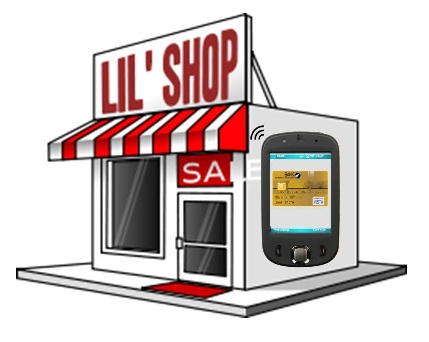 Small business payment processing company Electronic Commerce International urges small businesses to pay heed to mobile commerce choices and to embrace mobile payments from customers.
Small business payment processing company Electronic Commerce International urges small businesses to pay heed to mobile commerce choices and to embrace mobile payments from customers.
Fighting big business
One thing all small businesses have in common is the need to compete with larger businesses. Small business owners not only have to compete, but they also have to stay up on the latest trends and embrace what may be coming next or be left behind. Analyst at Yankee Group believe that small businesses that start using mobile payments are going to stay relevant. In fact, they believe that this should be an obvious move for small business entities.
Point of sale mobile commerce is predicted to be a huge trend for the year 2013. Smartphone users have options from the likes of Visa and PayPal that allow them to use their smartphone instead of cash or a credit card when making purchases in retail locations. Not everyone believes in the next boom being in mobile commerce, however, with Gartner predicting on 2% saturation in the market for mobile payments. However, having the ability to accept the technology can never be a bad thing as long as costs are low.
Proof is in the pudding
There are some doubts as to the projection of mobile payments in 2013 and beyond, but Jim Anderson, CEO of Electronic Commerce International reports that a full 20 percent of holiday sales for 2012 were done via mobile payments. These payments are no longer a novelty, but are becoming more of the normal way that some prefer to shop. Small businesses that accept mobile commerce payments can stay ahead of the curve.
Companies like Visa, MasterCard, and many financial institutions with large customer bases are said to be the leaders in mobile payments in the coming year. PayPal already has a program in place and is expected to handle 10 billion dollars in transactions in the coming year from mobile payments alone. Others, like Apple, have not added the functionality to new devices which may put a dent in the predictions for mobile commerce in general. However, Apple accounts for a small percentage of smartphone sales leaving a broader segment of users with the ability to start using the technology.
 A new research analysis predicts that this achievement will be made by 2015.
A new research analysis predicts that this achievement will be made by 2015.
The Chinese mobile payments marketplace is starting to show some very promising figures that are suggesting that this could be one of the dominant worldwide players and that it may be one of the examples that are set for other countries regarding the way in which the technologies can be adopted successfully.
The data from a recent report has indicated that China could be ready for an explosion in this area.
Analysys International, a market research firm, has now released the results of its most recent analysis, which has indicated that by 2015, the mobile payments made within the People’s Republic of China will break the $114 billion mark (CNY712.3 billion). This would mean that in two years, the transactions over that channel will be greater in that nation than in any other country in the world.
The mobile payments report also indicated additional achievements within the next two years.
Beyond the total value of the transactions themselves, Analysis International is also projecting that by 2015, the payments made over third party internet platforms will reach $2.24 trillion (CHY 13.92 trillion), as per the report that was made in China Tech News.
Once the 2012 license structure was fully implemented, companies offering third party transactions started to boost their presence within the mobile payments marketplace. Furthermore, a growing number of traditional payment organizations are beginning to take their first steps into the digital environment, which is boosting the need for those third party providers. This increase in the number of opportunities is further encouraging the growth of the number of those enterprises.
Similarly, the report explained that the recent establishment of the mobile payments standards are having a considerable impact on the marketplace. This made it possible for foreign investors to be able to take their own steps into the smartphone and tablet marketplaces. This is allowing for a much more rapid development of the technology and is boosting the public awareness. The result is that device users are building their acceptance of the transaction method and are starting to choose those options when it comes time to make a purchase.
 Small business payment processing company Electronic Commerce International urges small businesses to pay heed to mobile commerce choices and to embrace mobile payments from customers.
Small business payment processing company Electronic Commerce International urges small businesses to pay heed to mobile commerce choices and to embrace mobile payments from customers.
 A new research analysis predicts that this achievement will be made by 2015.
A new research analysis predicts that this achievement will be made by 2015.